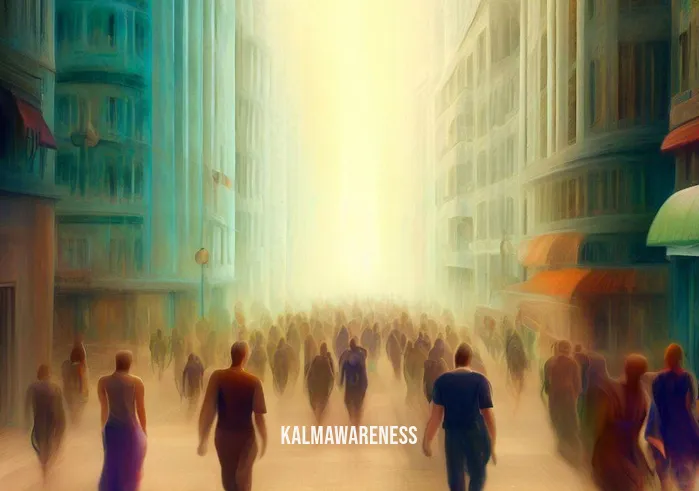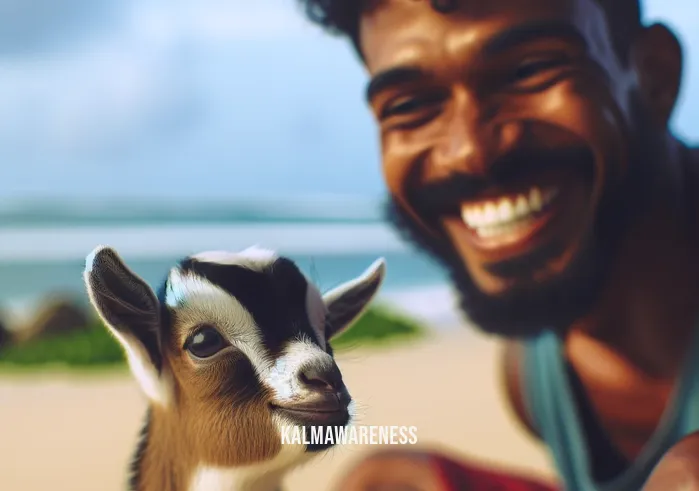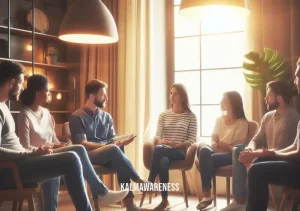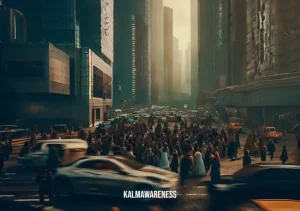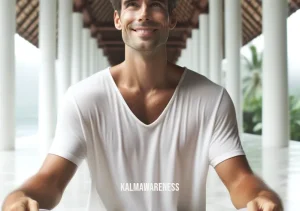Aphantasia Meditation: Discovering Mindfulness Practices Tailored to the Non-Visual Mind
Aphantasia, a condition where one can’t visualize images in their mind, might seem like a roadblock for many when it comes to meditation. Traditionally, meditation has often relied on visual imagery—envisioning a calm beach, a serene forest, or the simple act of watching thoughts pass by like clouds. But what happens when this very fundamental aspect of meditation is inaccessible? Can individuals with aphantasia still cultivate mindfulness and tap into the profound benefits of meditation? The answer is a resounding “yes.” In fact, the journey of aphantasia meditation might offer fresh perspectives and unique experiences that can transform the entire meditation landscape.
Understanding Aphantasia and Its Implications in Meditation
Aphantasia, often described as a “blind mind’s eye,” represents a spectrum. Some with the condition can’t visualize anything at all, while others might have faint, fleeting images. It’s essential to understand that this lack of mental imagery isn’t indicative of a deficiency but rather a different cognitive style.
“Meditation, at its core, is not about what you can see but about what you can feel and experience.”
For many with aphantasia, the initial introduction to meditation can be challenging. They might feel left out when a guide says, “Imagine a radiant light expanding from your heart,” or “Picture yourself in a place of peace.” However, these visual cues are just tools, not the essence of meditation itself. Dive deeper into the world of Mindfulness Practices for Individuals with Aphantasia to discover that visualization is just one of many paths.
Cultivating Non-Visual Awareness in Aphantasia Meditation
People with aphantasia often have heightened other senses and forms of internal experiences. Here’s where Cultivating Non-Visual Awareness plays a pivotal role. By focusing on:
- Sound: Whether it’s the rhythm of your breath or the distant chirping of birds.
- Sensation: The feeling of your feet on the ground, the air on your skin, or the beating of your heart.
- Emotion: Connecting with the raw emotion, be it joy, sadness, or tranquility.
These become powerful anchors in meditation, opening doors to mindfulness that don’t require a visual component.
Nurturing Inner Presence without Visual Imagery
Visualization can be a tool for grounding, but it’s not the only tool. Nurturing Inner Presence without Visual Imagery means:
- Tuning into your body’s sensations, from the top of your head to your toes.
- Observing thoughts without judgment. For someone with aphantasia, thoughts might manifest more as words, feelings, or abstract concepts.
- Practicing breathing techniques, which we will delve deeper into within the realm of Breathing and Meditation.
It’s about being present, right here, right now, without the need for visual constructs.
The Unique Potential of Aphantasia Meditation
Meditation for those with aphantasia is not a diminished experience; it’s simply different. Just as we all have unique fingerprints, our meditative journeys are individualized paths. Some of the potential benefits of aphantasia meditation are:
- Enhanced auditory and sensory mindfulness practices.
- Profound connection with one’s emotions and sensations.
- A deeper understanding of the mind beyond visual constructs.
By tapping into the rich tapestry of Exploring Mindfulness Approaches for Aphantasia, one realizes that the mind’s eye isn’t just about seeing; it’s about experiencing.
Moving Forward: Embracing Meditation Beyond Imagery
The journey of meditation is vast and varied. For those with aphantasia, it’s essential to remember that the path of mindfulness is open, welcoming, and teeming with possibilities that extend beyond the visual realm. As we’ll explore in the next chapter, the intricacies of breathing play a foundational role in this journey. By anchoring oneself in the breath, the world of meditation blossoms in myriad ways, inviting everyone, regardless of their ability to visualize, into its embrace.
Excited to delve deeper? Continue reading to explore how breathing techniques become the cornerstone for those keen on mastering aphantasia meditation.
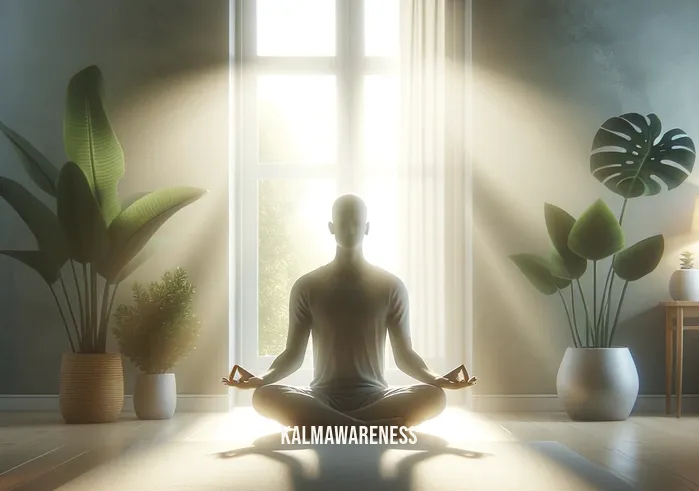
The Harmony of Breath and Being: A Deeper Look into Aphantasia Meditation Techniques
Aphantasia meditation transcends the mere absence of visual imagery. Instead of being a limitation, it serves as a unique springboard into a realm of deeper mindfulness and self-awareness. The nuances of this specialized meditation method lie in harnessing one’s other sensory experiences and learning techniques that align with an aphantasic mind. Let’s delve into some techniques and frameworks that can aid in this journey.
Sensory Bridges in Aphantasia Meditation
Beyond the visual, our senses open a world of experience. By tuning into these other senses, individuals with aphantasia can achieve a rich tapestry of mindfulness:
- Auditory: Sounds around us, from the rustling of leaves to the distant hum of the city.
- Tactile: Sensations, like the gentle brush of wind or the soft fabric against our skin.
- Olfactory: The various scents that waft our way—freshly cut grass or the aroma of brewing coffee.
- Gustatory: Tasting, savoring, and being present in the act of eating.
Each of these senses becomes a bridge to mindfulness, guiding an individual closer to the present moment.
The Power of Mantras and Affirmations
Mantras and affirmations can be a powerful tool, especially when visualization is not accessible. Chanting, repetition, and auditory anchoring provide an alternative pathway for grounding and focus. Here’s a simple exercise:
- Choose a meaningful word or phrase.
- Repeat it silently in your mind.
- Observe any emotions, sensations, or thoughts that arise without judgment.
- Return to the mantra whenever you feel distracted.
Techniques Tailored for Aphantasia Meditation
The following table showcases a selection of techniques designed with aphantasia in mind:
| Technique | Focus | Benefits |
|---|---|---|
| Body Scan | Tactile sensations | Enhanced body awareness; relaxation; grounding. |
| Sound Meditation | Auditory senses | Improved focus; connection to environment; reduced stress. |
| Breath Awareness | Sensation of breathing | Grounding; improved concentration; emotional regulation. |
| Mindful Eating | Gustatory and olfactory senses | Enhanced enjoyment of food; better digestion; mindful presence during meals. |
| Affirmation Chanting | Auditory repetition | Positive self-talk; grounding; alignment with personal values and aspirations. |
The Continual Journey of Aphantasia Meditation
The beauty of aphantasia meditation lies in its dynamic nature. It’s not about trying to replicate or replace the traditional meditation experience but about discovering a personal journey that resonates with one’s unique mental landscape. As the world of meditation expands its understanding and offerings, more tailored techniques and practices cater to aphantasic individuals.
A Glimpse into the Future: The Road Ahead
Aphantasia meditation, like all forms of mindfulness, is an ever-evolving journey. Every session, every technique, and every moment of awareness brings one closer to understanding their true self. The diversity of experiences, combined with the vast array of techniques available, ensures that the road to mindfulness for someone with aphantasia is as enriching as it is enlightening.
In our exploration of aphantasia meditation, we’ve barely scratched the surface. Continue reading to discover the profound benefits and transformative experiences that this specialized meditation can offer in the next chapter.

The Heartbeat of Hope: Unveiling the Inspirational Landscape of Aphantasia Meditation
At the crossroads of challenges and aspirations, we find inspiration. Aphantasia meditation is no different. It’s not just a technique or practice; it’s a beacon of hope for many. The very essence of this meditation form showcases resilience, adaptability, and the undeniable spirit of human perseverance. Here, we’ll explore how aphantasia meditation has not only illuminated the pathways to mindfulness for many but also become a source of profound inspiration.
Discovering Strength in Unique Experiences
Aphantasia, often termed as a “blind mind’s eye,” isn’t a limitation but a different perspective. The way someone with aphantasia experiences the world is unique, rich, and multi-dimensional. And, as they say:
“The best view comes after the hardest climb.”
Meditative mindfulness for those with aphantasia is a journey of discovering strength in one’s unique experiences. It’s a testament to the fact that every mind, every individual, has the potential to connect, introspect, and find solace.
Voices of Aphantasia Meditation
Dive deeper into the community, and you’ll come across numerous stories that echo hope. Here are a few quotes that capture the essence of this journey:
- “In the silence of my mind, I found the loudest cheers.“
- “Without the visuals, I saw the truth more clearly.“
- “Aphantasia taught me that vision isn’t just about seeing; it’s about believing.“
- “Meditation, for me, became a dance of senses beyond the visual.“
- “In the absence of imagery, I painted with feelings, sensations, and sounds.“
These voices, from real individuals, underscore the transformative power of aphantasia meditation.
A Symphony of Non-Visual Experiences
Meditation tailored for aphantasia pivots around non-visual experiences, making it an orchestra of sensations, sounds, and feelings. Every sensation becomes a note, every sound becomes a rhythm, and every emotion becomes a melody. This symphony is nothing short of inspirational.
“In every challenge, there lies an opportunity. In every silence, there lies a song.”
The Collective Inspiration of the Aphantasia Community
Communities play a pivotal role in nurturing hope. The aphantasia meditation community is a tapestry of individuals who’ve embraced their unique cognitive style and turned it into a source of inspiration for many. By sharing stories, techniques, and experiences, they’re not only aiding their journey but lighting the path for others.
Onward: The Infinite Potential of Aphantasia Meditation
While we’ve explored the inspirational vistas of aphantasia meditation, the journey is endless. Each session, each moment of awareness, and each shared experience add layers to this intricate tapestry of hope and mindfulness.
Every story of resilience underscores the power of human adaptability. Every technique tailored for aphantasia reminds us of the vastness of human experiences. And every moment of mindfulness achieved without visual imagery reiterates that at the end of the day:
“It’s not about what we see but what we feel, understand, and believe.”
As we tread further, in the next chapter, we’ll delve into the transformative benefits that aphantasia meditation can usher into one’s life. Continue reading to dive into the myriad ways this specialized form of meditation can elevate one’s well-being.
@
The Blueprint of Aphantasia Meditation: Navigating the Pathways of Non-Visual Mindfulness
Aphantasia meditation is not a mere modification of conventional meditation techniques but rather a tailored journey of discovery. In this chapter, we’ll break down the structure and methods that make aphantasia meditation a transformative practice for those who don’t rely on visual imagery.
The Foundations of Aphantasia Meditation
Aphantasia meditation stands on several pillars. Let’s explore these foundational elements:
Sensory Anchors: Unlike traditional methods that emphasize visual anchors, aphantasia meditation harnesses other senses:
- Sound: Listening to natural sounds or guided meditations.
- Touch: Feeling the weight of the body, or tactile sensations like a breeze or the texture of an object.
- Smell: Using aroma as a grounding element, whether it’s the scent of a candle, essential oils, or the natural environment.
- Taste: Engaging in mindful eating or savoring flavors.
Mantras and Affirmations: As explored previously, mantras become auditory anchors that help in focusing the mind.
Breath Awareness: Without the visual component, breath becomes an even more critical anchor. It’s an ever-present sensation that can guide the meditator back to the present moment.
Techniques and Practices: Diving Deeper
Building on the foundational pillars, various practices can enhance the aphantasia meditation experience. Let’s dissect a few:
Body Scan:
- Focuses on tactile sensations.
- Progressively moves attention throughout the body.
- Highlights tension, relaxation, or neutrality.
Sound Meditation:
- Uses natural or ambient sounds.
- Cultivates a deep sense of listening.
- Helps connect with the environment.
Mindful Eating:
- Encourages gustatory awareness.
- Promotes gratitude for food.
- Highlights textures, temperatures, and flavors.
Journaling:
- A reflective practice post-meditation.
- Allows capturing emotions, insights, or experiences.
- Builds a deeper connection with self-awareness.
Enhancing the Experience: Tools and Aids
While the above techniques form the core, several tools can augment the experience for someone practicing aphantasia meditation:
Guided Audio Meditations: Especially beneficial as they don’t rely on visual imagery and can guide the meditator through other sensations.
Tactile Objects: Items like meditation beads, textured cushions, or even stress balls can provide tactile feedback and serve as a focus point.
Aroma Diffusers: Engage the olfactory senses, providing both grounding and a pleasant environment.
Meditative Music: An auditory backdrop that can enhance concentration and set the mood for the session.
Reflections and Anticipation: Towards the Journey’s Climax
While we’ve peeled back the layers of aphantasia meditation in this chapter, our exploration is not over. The intricate dance of senses, the depth of non-visual experiences, and the sheer potential of this practice is profound.
With a clearer understanding of the structure and methods, we’ll transition to our final chapter where we encapsulate the transformative journey of aphantasia meditation. Continue reading as we draw conclusions, reflect on the experiences, and gaze forward to the ever-evolving horizon of non-visual mindfulness.
@
The Melody of Mindfulness: Reflecting on Our Aphantasia Meditation Odyssey
Our exploration of aphantasia meditation has been nothing short of enlightening. We’ve journeyed through the nuances of a mind that experiences meditation without the canvas of visual imagery. Along this path, we’ve uncovered strength, inspiration, and a unique blend of mindfulness practices tailored to the aphantasic mind.
Embracing the Dance of Senses
Our journey illuminated the fact that mindfulness isn’t confined to what we see in our mind’s eye but resonates with all our senses. We’ve learned that the heart of meditation is presence, understanding, and connection:
- With our sensory anchors, like sound, touch, taste, and smell.
- Through the repetition of mantras and affirmations.
- And by grounding ourselves in the ever-present rhythm of our breath.
Voices of Resilience and Hope
This odyssey has been peppered with voices of resilience, stories of hope, and testimonials of transformation. These voices remind us:
“In the absence of imagery, we’re not in darkness. Instead, we find light in sounds, sensations, and emotions.”
Looking Ahead with Bright Eyes
As we’ve journeyed through the multi-dimensional world of aphantasia meditation, we understand it’s just the beginning. The realm of meditative mindfulness is vast, and there’s always more to explore, understand, and experience.
A Gratitude-filled Goodbye (For Now)
Thank you, dear reader, for walking alongside us in this exploration. We hope this deep dive into aphantasia meditation has provided you with insights, tools, and the inspiration to embark on or further your own mindfulness journey.
If any part of our journey piqued your interest or if you’d like a refresher, feel free to revisit previous sections. And remember, every journey of mindfulness is personal and unique—embrace yours with an open heart.
Before we conclude, a small request: Share your thoughts, experiences, and insights with us. Whether you’ve practiced aphantasia meditation or are just beginning to explore it, your voice adds value to our collective understanding.
Stay tuned for more insightful content in our future editions. Until then, cherish the present, nurture your inner world, and dance to the rhythm of your unique meditative song.
